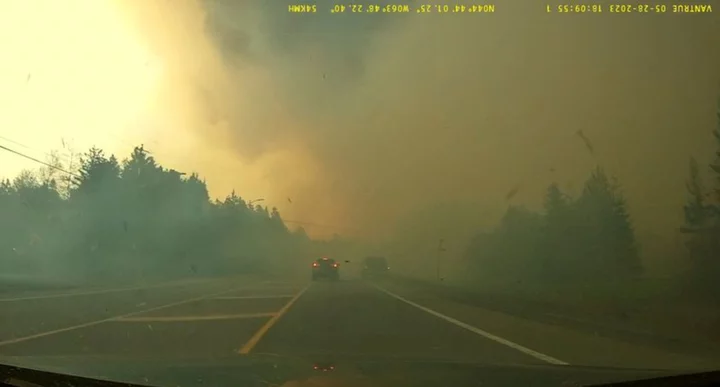Water is essential to plant life, but what happens when there’s too much of a good thing, as has been the case in many parts of the country and the world this summer?
Extreme rainfall is more frequent now, atmospheric scientists say, as storms form in an atmosphere made warmer by climate change.
In the garden, too much water can have fatal consequences, says Nick Goltz, director of the UConn Plant Diagnostic Laboratory at the University of Connecticut in Storrs, Connecticut. “ Flooding deprives roots of oxygen, which leads to root-rot diseases, and then plants can’t pull water up (and) through their leaves and vascular tissue.”
In an ironic case of “water, water everywhere and not a drop to drink,” flooded plants become parched.
The result is yellow, wilting foliage, which ordinarily would signal a plant’s need for water. But after flooding, those same drought symptoms mean that waterlogged roots can't function in soggy conditions.
WHAT YOU CAN DOAvoid walking on mud if your garden has been affected by flooding, and wait until the soil has mostly dried before assessing the damage. Applying any weight or pressure to wet soil can lead to compaction and press out even more oxygen from around struggling roots.
A plant with just a few symptomatic leaves may bounce back, but one that’s wholly wilted probably won’t, Goltz said, adding that plants with strong, deep roots – like trees and some perennials – have the best odds of recovery.
Annuals, which have shallower roots, don’t stand much of a chance, he said, so they should be removed if they look unhealthy.
Plants weakened or stressed by flood water are more susceptible to pests and diseases, so keep an eye on them and treat problems as they arise, which could be months later.
Broken tree limbs should be removed immediately, but save major pruning for when conditions improve to avoid further weakening an already stressed tree.
ARE FRUITS AND VEGETABLES SAFE TO EAT?Flooded fruits, vegetables and herbs should be considered contaminated and not eaten.
“If the part you’re eating touches the water, then it’s unsafe" — even if washed or cooked — "because in addition to bacteria from standing water, runoff from nearby yards, pesticides, sewage and chemical contaminants” could be present, Goltz said.
However, if your garden was flooded but the above-ground edible portion of a plant was not, “then it can be eaten,” Goltz said. “It’s generally safe to eat an untouched tomato growing on a vine… (but not) a melon sitting on the ground. And even then, it’s best to err on the side of caution by washing and cooking the tomato instead of eating it raw.”
If you’re mourning your lost vegetable garden, Goltz says that “in most cases, it’s fine to plant a short crop in soil that has been flooded.” Quick-growing plants like beans and peas will likely deliver before the end of the growing season. “Or you can plant a cover crop, like clover, which will control erosion and also fix nitrogen into the (likely depleted) soil.”
REPAIRING THE SOILAfter addressing your plants' needs, turn your attention to the flooded soil, which will also need some TLC. Flooding leaches out nutrients and can disrupt drainage. Mixing in compost will help on both counts, and sand will improve drainage, as well.
Goltz recommends bringing or sending a soil sample to your local cooperative extension service or Land Grant university to test which nutrients or amendments should be replenished, and whether the soil’s pH needs adjusting. They can also test for heavy metal and other contaminants if you have reason to be concerned.
PREPARING FOR THE NEXT FLOODIf you live in an area prone to flooding, there are steps you can take to avoid or at least minimize future damage, such as growing vegetables at higher elevations or in raised beds. Goltz also recommends digging ditches or installing French drains to direct water away from the plants you care about most.
—-
Jessica Damiano writes the award-winning Weekly Dirt Newsletter and regular gardening columns for The AP. Sign up here to get weekly gardening tips and advice delivered to your inbox.
—-
For more AP gardening stories, go to https://apnews.com/search?q=gardening#nt=navsearch









